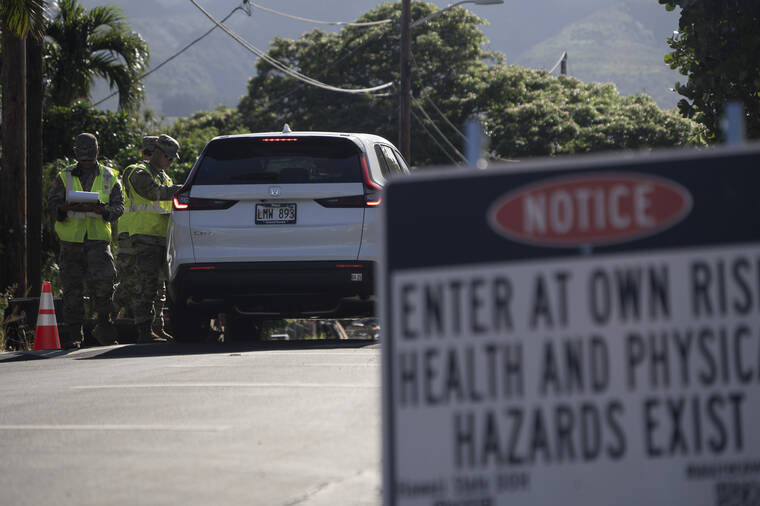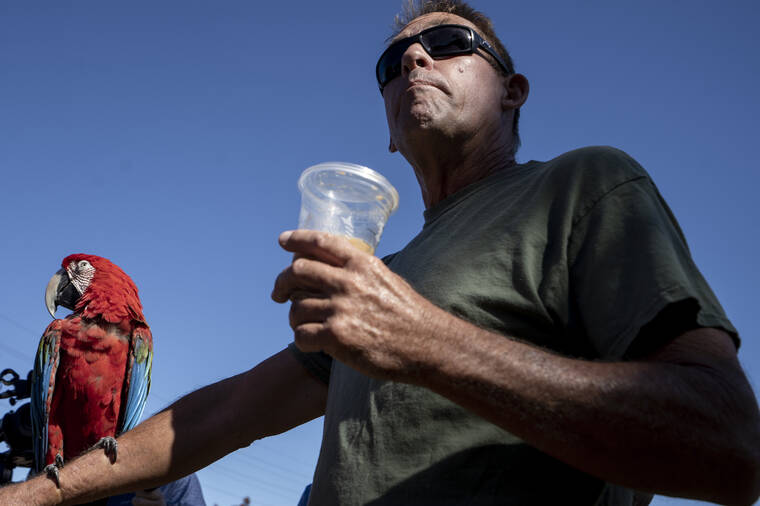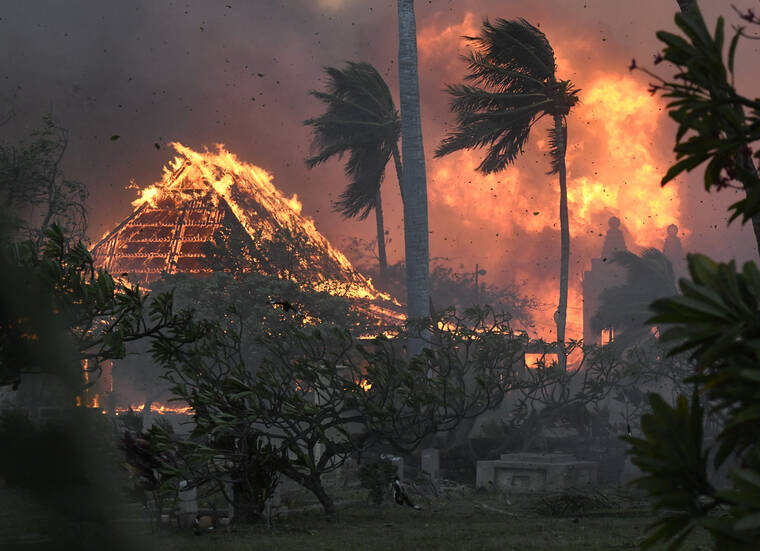First of thousands of Lahaina residents return to homes destroyed by deadly wildfire
LAHAINA — The first of thousands of residents who lost their homes in the wildfire that destroyed the Hawaii town of Lahaina returned to their devastated properties Monday, with some stopping for a moment of reflection and others searching for mementos among the ruins.
“They’re very appreciative to get in here, something they’ve all been waiting anxiously for,” Darryl Oliveira, interim administrator of the Maui Emergency Management Agency, told reporters gathered outside the burn zone. “People who haven’t been here since the fire are taken aback by the amount of and extent of the destruction.”
In the days following the Aug. 8 wildfire, some people were able to return to their properties to evaluate the damage. But since then, the burned area has been off-limits to all but authorized workers. Authorities opened one small part of it on Monday, allowing residents in for supervised visits from 8 a.m. to 4 p.m. By midday, about two dozen vehicles carrying residents had entered the area.
The prospect of returning has stirred strong emotions in residents who fled in vehicles or on foot as wind-whipped flames raced across Lahaina, the historic capital of the former Hawaiian kingdom, and overcame people stuck in traffic trying to escape.
The wildfire killed at least 97 people and destroyed more than 2,000 buildings, most of them homes. Some survivors jumped over a sea wall and sheltered in the waves as hot black smoke blotted out the sun.
Officials urged returning residents not to sift through the ashes for fear of raising toxic dust. The first area to be cleared for reentry was a zone of about two dozen parcels in the northern part of Lahaina.
From a National Guard blockade near the burn zone, Jes Claydon has been able to see the ruins of the rental home where she lived for 13 years and raised three children. Little remains recognizable beyond the jars of sea glass that stood outside the front door.
Claydon hoped to collect those jars and any other mementos she might find.
“I want the freedom to just be there and absorb what happened,” Claydon said. “Whatever I might find, even if it’s just those jars of sea glass, I’m looking forward to taking it. … It’s a piece of home.”
Claydon’s home was a single-story cinderblock house painted a reddish-tan, similar to the red dirt in Lahaina. A few of the walls are still standing, and some green lawn remains, she said.
Those returning were given water, shade, washing stations, portable toilets, medical and mental health care, and transportation assistance if needed. Nonprofit groups also offered personal protective equipment, including masks and coveralls. Officials say ash could contain asbestos, lead, arsenic or other toxins.
Most journalists were confined to an area where they could not see people visiting their properties. Oliveira said officials wanted to ensure residents had space and privacy to reflect or grieve.
A team of more than two dozen people from Samaritan’s Purse, a nondenominational Christian ministry, was on hand to help residents sort through what was left of their homes, said Todd Taylor, who works with the organization.
“It’s like losing a loved one. That’s exactly what these folks are going through,” Taylor said. “Those homeowners can talk to us about their house — ‘This is where my bedroom was, and I had a nightstand here with my wedding ring,’ or, ‘My grandfather’s urn was on the sink’ — those type of indicators that can help our volunteers sift through the ash and look for very specific items.”




What happened to civil defense? MFD. There was no immediate help because there was no pay. Nobody’s working or getting paid. This is not a full time job. So nobody was called upon. That’s the issue.
God bless them all…………..from Indiana.
Also now that the residents are returning to their homes and things are trying to get back to normal, how will the business community survive. Some lost their house. Some lost their business. Are they sure they even have a county council on Maui for government run community? The state took over. There is no Maui county government.
This is harder. The money is all federal. Big deal? Well maybe. But it’s a federal and it’s a republic. Not democracy. They have no life yet. Luckily they have airports and state to help out.
Count out all the loser athletics in government. And put qualified people in only. This works for any level. Kauai too fits in the plan. There is no Bernard Carvalho. The former UH player. Because he’s useless.
What do people think of my plan? No athletics in politics.
I live in Koloa area. By the hotels. Been there since 1974. I know how Maui feels. We need to come together. I was there in Koloa when they renovated the Sheraton Kauai Hotel in 1981. And when they built the Hyatt hotels in 1991. So not knew to the community. I hope all is well for the town people in Maui.
But that’s me. A local on the island since 1974. My parents were actually from West Virginia. They have lots of car audio there, so I just code name it that. Now I live here.